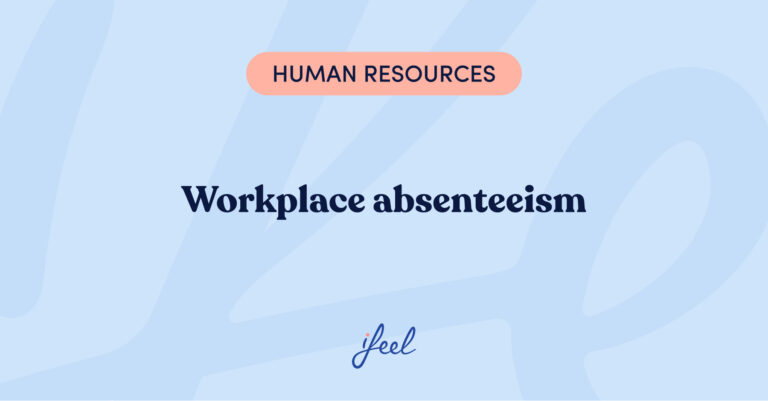Employees don’t just come from one source; if you didn’t know this, then you don’t know about inbound recruiting. Let’s take it one step at a time. As you can imagine, an HR manager’s work goes beyond the search and selection of candidates. However, this task usually takes up a lot of space in human capital management since it is one of the main entry points for new talent in an organization.
A fundamental way of finding new team members is to actively look for them from within the company, knocking on their door regardless of whether they know the company exists or whether they have considered working there. This is known as outbound recruiting or outbound hiring: the company actively searches for employees.
Another strategy involves getting potential employees interested in the company and approaching it, knocking on its door without the company directly contacting them. This is known as inbound recruiting: when the potential employee contacts the company.

Advantages of inbound recruiting
We can easily find at least three advantages of using an inbound recruiting strategy when carrying out candidate selection processes:
Firstly, inbound recruiting allows access to talented candidates who are not directly visible through an active job search but whose addition could be beneficial to the company.
Moreover, developing an inbound recruiting strategy allows HR departments to save energy tracking, searching, and selecting several candidates.
Finally, an effective inbound recruiting methodology feeds back in a very productive way with the external reputation of the brand: the better it is, the more likely it is that people from outside the company will be interested in joining its team.
How to create an inbound recruiting strategy
Despite the relevant advantages of inbound recruiting, this strategy for incorporating new talent into the company does not come from anywhere, nor is it improvised. Nor is it advisable for any type of company or, especially, to fill any type of vacancy.
For starters, inbound recruiting requires a good strategy for promoting the brand, the product, the mission, and, above all, the company’s culture. By doing so, the company makes itself known to the outside world, showing potential internal clients why working there is the best option. This is how it attracts their attention and even makes them fall in love with it. The underlying idea is that they are the ones who are mobilized to contact the company and become interested in joining it through some kind of self-candidacy.
It is essential to apply the basic philosophy of inbound recruiting (when the candidate searches for the company) to the job offers section of the company’s website, to the offers published on external job portals, and to the company’s marketing campaigns in general. This makes the company attractive and makes it more visible. It must make a difference in how it presents itself and its current and future vacancies. Ultimately, it is a matter of standing out from the competition and attracting the attention of potential prospective employees, encouraging them to notice the company for the right reasons, which will favor their future retention in the team.
To achieve this, the company’s website must be attractive and user-friendly. It must make it easy for the potential candidate to solve their request at that moment: to establish a first contact with the company to see if it is possible to agree on some kind of collaboration.
Stages of an inbound recruiting strategy
Although it is difficult to establish an inbound recruiting strategy in strictly serial terms (a succession of steps that take place one after the other), we will establish the three fundamental phases or elements that such a strategy should have.
1. Be attractive as a company
As mentioned above, the fundamental concept within an inbound recruiting strategy is attraction: the company must be attractive, so potential new employees notice it and feel the desire to join the team.
Therefore, a first phase within the strategy would be to make an entire makeover of the website, the logo, the way it is presented to the press, and the public corporate materials (mainly images and videos).
Of course, this also includes encouraging internal promotion (through current employees or their trusted contacts) when a vacancy arises.
2. Nurturing contact from the very first moment
A second phase, or aspect, of this strategy, is to be friendly and welcoming. If we are an attractive company, potential future employees will likely contact us or become interested in joining the team through a self-candidacy.
We must pay attention to these contacts and take care of them from the beginning. This way, not only will we avoid potential talented workers leaving us because we have not taken good care of them, but we will also reinforce our image as an attractive company by being coherent. Not only do we look great, but we are great.
3. Transforming the tentative contact into an actual candidacy
The third aspect to consider within the phases of an inbound recruiting strategy consists of incorporating those first tentative contacts that the public makes from the outside into an actual personnel selection process. It is about closing the deal with the potential future employee and closing it well.
Inbound recruiting is an innovative candidate-centric methodology
It is not possible to practice proper inbound recruiting without making yourself known openly and honestly. To do this, in addition to informing about the foreseeable characteristics of an offer, it is necessary to allow potential employees to get to know relevant aspects of the company (work methodology, employee experiences, facilities, corporate culture, etc.) before starting a candidate selection process.
For example, it is not enough for an employee who is considering changing jobs – and who, because of their talent, has alternatives to choose from – to know that your company is a great place where they can develop professionally: that’s just a slogan that all their alternatives will handle, but it doesn’t say much to them.
To begin to fall for a particular company, the prospective candidate needs to know what makes that company “a great place” and how it will allow them to “develop professionally”. If, in addition, they can see what the office looks like, examples of corporate events, or realistic evidence of the company culture, then they will be more inclined to contact that company rather than those that hide essential information behind a slogan.
An effective inbound recruiting strategy allows potential candidates to become real candidates, that is, to start the “journey” that can lead them to become internal customers and begin their experience as employees.
For this experience to be satisfactory and efficient, the company must reassure the candidate that they are doing the contact process correctly through simple steps, confirm that their application or candidacy has been sent correctly, and provide them with information on what they should expect next.

For example: “Only those applications that meet X requirements will be considered” or “One of our human resources managers will contact you before X time” or “you will receive an email confirming we have received your application, if you do not receive it you can write to us at this address and we will solve it quickly”, are messages that provide certainty to the candidate and improve their experience with the company, even if they don’t end up joining your team.
In short, an inbound recruiting strategy must be systematically integrated into the company’s overall recruitment strategy. This, in turn, is part of the general strategy of care and development of the company’s human capital carried out by those in charge of HR.
The importance of professional advice
Ifeel has created an emotional well-being program for companies, designed by its team of professional psychologists, which helps companies put the care of their employees’ psychological well-being at the heart of their company culture to boost productivity sustainably.
Thanks to this partnership, HR managers can receive personalized, data-driven advice on how to get the most out of their onboarding efforts.
Additionally, ifeel‘s emotional well-being program for companies offers employees a mental health care service structured at different levels according to their needs. They can access different mental health care tools with ifeel‘s app. They can also receive emotional support through a chat with one of the licensed psychologists on our platform. If additional help is needed, they can access the third level of the program: online psychological therapy with a psychologist who specializes in cases such as theirs.
Get in touch today and request more information about our emotional well-being program for companies.










